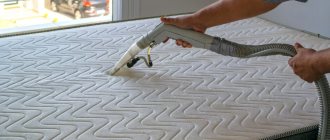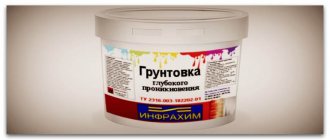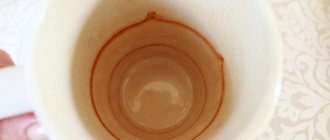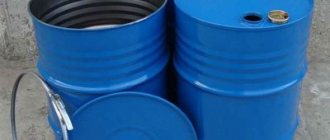Such a useful thing as a thermos is probably in every home - it will provide you with a hot drink on hikes and long walks, a nutritious lunch at work, and is also indispensable for athletes and lovers of herbal teas. However, like anything that is frequently used, after some time the thermos becomes covered from the inside with a coating of drinks, and an unpleasant odor begins to emanate from it. How to deal with this? In this material we will tell you absolutely everything about how to wash a thermos.
How to clean a thermos from plaque
Almost every housewife has means for cleaning the inner flask from plaque. Such substances have proven themselves to be cheap and effective detergents.
Lemon acid
The acid removes tea and coffee deposits well on the flask and adds freshness. To remove dirt:
- Pour a few tablespoons of dry matter into the flask (adjust the amount of acid depending on the volume of the thermos).
- Pour boiling water into the container.
- Close the lid tightly.
- Wait at least 15 hours, or better yet, a day.
- Drain the solution.
- Rinse the flask thoroughly with hot running water.
The procedure can be repeated if necessary.
Vinegar
Vinegar essence is great not only for cooking, but also for cleaning various objects and surfaces. To clean a thermos with vinegar:
- Fill less than half the flask with vinegar.
- Add boiling water, filling the thermos to the top.
- Cover tightly with a lid and shake well.
- Wait a few hours.
- Drain the liquid and rinse the flask with hot water until the vinegar smell goes away.
Vinegar removes black deposits and foreign odors well.
Tablets for cleaning dentures (corega)
Such preparations are used to remove food debris and plaque on dentures, so they are also perfect for cleaning a thermos.
Action plan:
- Place several tablets in the flask at the rate of 1 tablet per 500–600 ml of water.
- Pour boiling water over the contents.
- Place the thermos in the sink as the product will foam.
- Leave for several hours, or overnight if heavily soiled.
- In the next step, drain some of the liquid and scrub the inside with a sponge or brush.
- At the end of the procedure, rinse the substance with running water.
Soda
Baking soda is widely known as a universal cleansing antiseptic. To remove plaque:
- Pour a few tablespoons of soda into the flask and pour boiling water over it.
- Leave the product in the thermos for at least 5 hours, screwing the lid tightly on.
- Add a little coarse salt to the liquid and close the container again.
- Shake thoroughly and leave for another 40-60 minutes.
- As a final step, drain the cleaning solution and rinse the container.
It is known that soda actively interacts with vinegar, forming foam. A similar composition can also be used to clean a thermos. Mix 100 ml of soda and vinegar in a container and pour boiling water. Do not close the lid. A reaction will begin that will help remove the black plaque. After the procedure, be sure to rinse the flask with warm running water.
Rice
Rice is unique not only in taste, but also in physical properties. It works well as an abrasive and absorbent agent, so it is widely used for cleaning hard-to-reach surfaces. Procedure:
- Pour 100 g of rice into the flask.
- Pour boiling water over it.
- Close the lid tightly.
- Shake the thermos and let it sit for 40–60 minutes.
- During this time, shake the container periodically.
- Discard the cleaning agent and rinse the flask.
Baking powder
Baking powder contains soda and citric acid, so it is ideal for cleaning a thermos. To remove plaque:
- Pour a few tablespoons of baking powder into the container.
- Fill the substance with warm water.
- Leave the substance in the thermos for about 3 hours.
- Drain off the cleaning solution and wipe the inside surface with a brush.
- At the last stage, rinse the flask with warm water.
Brine solution (salt)
Salt does a good job of cleaning various surfaces from plaque and odors. To cleanse the inner capsule:
- Dissolve salt in water at the rate of 4 tbsp. spoons of salt per 0.5 liter of liquid.
- Pour the solution into a thermos and fill it with boiling water.
- Leave for 10–12 hours.
- Drain the mixture and rinse the flask with running water.
Salt will also perfectly clean a thermos if you mix it in a flask with small ice cubes. After mixing the ingredients, close the lid and shake the container vigorously. Leave the cleaning solution on overnight and then rinse the flask with clean water.
Coca Cola
It has long been known that carbonated drinks containing phosphoric acid perfectly remove plaque, foreign odors and dirt. Coca-Cola, Sprite or Fanta will do a good job of cleaning a thermos. To remove dirt:
- Bring the soda to a boil in a separate container.
- Pour the liquid into the flask and leave for 10–12 hours.
- Drain the substance and rinse the thermos thoroughly.
You don’t have to bring the drink to a boil, but simply pour it into a thermos and leave it warm. The result with this cleaning method will be no worse.
Bleach
Whiteness is used for washing dishes in cases where it is necessary to restore the original shining appearance, so it will also do an excellent job of cleaning the inside of the thermos.
Action plan:
- Fill the flask with a little more than half the volume of bleach.
- Add warm water to the container.
- Close the lid and shake thoroughly.
- Leave for 60 minutes and then rinse with water.
Pay utmost attention to rinsing the flask. To avoid any unpleasant odor, first wash the flask with dishwashing detergent and then rinse thoroughly with clean water several times.
Ammonia
This method is used in the most difficult cases and will require maximum ingenuity from you. You will need a plastic bottle, an awl or needle, thick thread and, of course, ammonia.
Procedure:
- Prepare in advance a plastic bottle that will be smaller in volume than a thermos.
- Make 2-3 holes in the bottle cap and thread the threads through them.
- Pour ammonia into the bottle.
- Place the ends of the threads into the flask.
- Turn the bottle upside down to create something like a dropper.
Ammonia will slowly flow down the threads, and at this time the released alcohol vapors will affect stubborn dirt.
Mustard
For cleaning you will need mustard powder. Mustard is unique in that it not only removes dirt, but also cleanses the surface of grease. To clean the inside:
- Pour 3-4 tbsp inside. spoons of mustard powder.
- Fill the flask with boiling water.
- Cover tightly and shake the mixture.
- Leave the product for 10–12 hours, and then rinse the thermos with running water.
Cleaning methods using specialized products
In addition to folk remedies that have proven themselves in everyday life, there are also industrial ones that are safe and effective. These include “Silit” and “Antinakipin”. They are designed specifically for stainless steel. There are many other means. When purchasing, carefully read the instructions so as not to spoil the thermos or accidentally get poisoned. And of course, the label should indicate that the composition is suitable for stainless steel surfaces.
Do not use chemical solutions for plumbing! They contain dangerous components in the form of alkali or strong acid. These include “Domestos”, “Toilet duckling” and others.
If the thermos is not properly rinsed and dried, and the lid is tightly screwed on, fungus may appear in it - a coating of black mold. It's quite difficult to get rid of it. To do this, you can use industrial chemicals, and then be sure to pour boiling water over the flask and dry thoroughly. Always keep the thermos open so that it does not suffocate.
What should not be used during washing?
It is unacceptable to use the following for washing a thermos:
- aggressive means;
- powder substances;
- technical and household cleaning assets for the kitchen;
- metal brushes and pipe cleaners;
- sand;
- crushed eggshells.
If the methods suitable for the material turned out to be ineffective, and you decide to choose prohibited cleaning methods, be extremely careful and careful during the procedure, and also strictly follow the proportions specified in the instructions.
Please note that cleaning the rubber parts of the thermos with chlorine-containing products is strictly prohibited, as is immersing them in boiling water. As a result of such procedures, the rubber may become deformed.
Nuances of processing different parts of the container
The thermos should be washed immediately after each use. In addition, this must be done correctly, namely, all its parts in turn - the vessel, the lid, the stopper. Then dry all the elements thoroughly, and do not clog them so that mold appears.
Flask processing
When washing a thermos, it is important to pay attention to the characteristics of the material the vessel is made of. Then the shelf life of the container will be longer.
How to clean a thermos consisting of:
- Stainless steels are the best flasks; they retain heat much longer than, for example,
glass. However, they can easily become scratched. There are many methods for processing such materials, except for coarse abrasive. It is acceptable to use lemon juice, cereals, soda, soda, vinegar essence, and baking powder. - Glass is considered the most fragile. At the time of washing, the main thing is not to break the flask, and processing with minimal mechanical effort is acceptable. Lemon, Coca-Cola, saline solution, citric acid, and regular dish gel will help remove dirt.
- Teflon coating - washing methods are the same as for stainless models, it is important not to use aggressive chemicals.
Thermal dishes with a narrow neck are more difficult to clean, but there are still options. You can use a soft brush or pour boiling water all the way to the bottom and let it sit for a while. Then apply any of the above methods (add soda, vinegar, lemon). Shake the container several times to remove plaque as quickly as possible.
Processing of cork and cap
The elements are washed separately under the tap using a sponge and detergent. It is necessary to carefully clean adhered food particles to prevent the growth of bacteria.
After drying, there is no need to close the lid tightly; it is better to keep it open so that air can penetrate inside. This will prevent mold from forming.
Features of cleaning thermoses
When choosing the appropriate cleaning method, consider the material the flask is made of. Most often, thermos capsules are made of glass, metal or stainless steel.
Made of stainless steel
This material can withstand the effects of most cleaning agents or chemicals. The peculiarity of the material is that it is unstable to mechanical stress, so do not use abrasive substances or metal brushes and brushes for cleaning.
Glass
A glass flask is more vulnerable because, in addition to mechanical stress, it does not tolerate the influence of aggressive chemicals. To wash the glass flask, use soft substances at hand or regular dishwashing detergent.
Metal
Thermoses made of metal, with their quality characteristics, are practically not inferior to their stainless steel counterparts. Such flasks can also be cleaned with any suitable substances. The main thing is to thoroughly rinse off the cleaning composition after cleaning.
Why does coffee stain dishes?
Coffee contains natural pigments - anthocyanins. These are water-soluble dyes that are responsible for the bright color of leaves, fruits and flowers of plants. In the case of coffee, these are polyphenols that oxidize during heat treatment, and caramelization gives the beans a brown color. The pigment penetrates microcracks on the surface and colors the walls of the dishes.
Green grains contain fatty acids that are in a bound state. During roasting, the chemical composition of coffee changes; when heated, the oils become liquid and are released to the surface. This is why the grains acquire a characteristic shine. 100 ml of drink contains 14.4 g of vegetable fats, which stick to the walls of the dishes and are difficult to wash off.
A significant proportion of coffee contains organic acids: chlorogenic, citric and malic. These substances cannot damage a smooth ceramic surface, but they can partially destroy the top layer of metal and contribute to the coloring of cracks and chips. High temperature aggravates the process - the pores of the materials expand, which facilitates the penetration of pigment microparticles into the surface. Over time, coffee stains appear on the dishes, which is not so easy to wash off.
How to remove odor
If, in addition to black deposits and dirt, the thermos has an unpleasant odor, try using substances that absorb various aromas well. These include:
- salt diluted in warm water;
- coffee beans;
- crushed lemon poured with boiling water;
- dry mustard mixed with hot water;
- Activated carbon;
- soda;
- crackers from Borodino bread.
Any of these ingredients will quickly remove the unpleasant odor in the flask.
Prevention
To prevent an unpleasant odor from appearing in the thermos, after all the procedures described above, you need to provide the dishes with proper care and follow the rules:
- Rinse after purchase.
- Do not keep food for more than a day.
- Do not store an empty thermos tightly closed.
- Remove food residues in a timely manner.
- Put away only thoroughly dried items in the closet.
If a newly purchased new thermos has an unpleasant odor, then it must be washed with soapy water, doused with boiling water and dried. Another option: use baking soda, lemon and vinegar.
If you follow simple rules, you will enjoy the natural taste and aroma of your favorite drinks and dishes for a long time. Knowing how to remove odor from a thermos, you can easily fix the problem.
How to Remove Rust and Mold
If mold has formed inside the thermos during long-term storage, do not despair. You can get rid of fungus in the following way:
- Buy any dishwasher tablets in the household chemicals department.
- Treat the flask with a cleaning agent without using any mechanical influence.
- After cleaning, rinse the thermos with boiling water several times.
- Be sure to dry thoroughly after washing.
Don't forget to wash the lid of the thermos, which may also have become infected with fungus. For a more thorough clean, use an old toothbrush.
Such substances are very active, so perform the procedure very carefully and carefully. To prevent mold from appearing in the future, always rinse and dry the flask well, and do not close the lid if there is moisture left inside.
It happens that when a thermos is used for a long time, rust appears inside the flask. To remove corrosion, use any acidic product such as citric acid, vinegar or carbonated drink. After the procedure, be sure to rinse the flask with a soda solution, rinse under running water and dry thoroughly.
Is there a difference in caring for a glass and metal flask?
- Thermoses with a glass flask, for all their advantages, usually have less strength and are more sensitive to temperature changes than thermoses with a metal flask. Therefore, caring for “glass” has its own specifics.
- For thermoses with glass bulbs, preparation before use is extremely important. If you bring a thermos from the cold and immediately try to pour hot tea into it, the flask may crack. Avoid sudden temperature changes! Fill the thermos with warm water and wait a few minutes. Only after the inner surface has been warmed can the water be drained and the thermos filled with tea or coffee.
- Regardless of the type of flask, dropping the thermos is not recommended. However, if you drop a thermos with a glass flask, this may not only cause problems with heat retention, but also lead to splinters getting into your food or drink. Therefore, be sure to examine the flask for chips if something like this happens.
- All thermoses containing glass components are not recommended for use by children.
Preventive measures
The main reason that plaque forms on the inner surface of the thermos and fungus appears is that the liquid remains in it for too long and it is not washed in a timely manner.
To avoid the need to clean a metal or glass thermos from old stains, resort to special preventive measures:
- The flask must be cleaned every time after you drink the drink, using a brush or soap.
- After this, wipe the inside and outside parts and leave until completely dry.
- Keep open.
- For preparing any drinks, use only filtered water.
- Prepare the drink separately, and only when it is ready, pour it into a thermal container.
- Do not store the drink inside for longer than one day.
Of course, nothing will help against the appearance of tea stains on the walls. He will constantly appear. But when you just see even small traces of it, it is better to wash them right away than to try to remove complex stains later. Moreover, you can only remove stubborn stains using aggressive agents.











